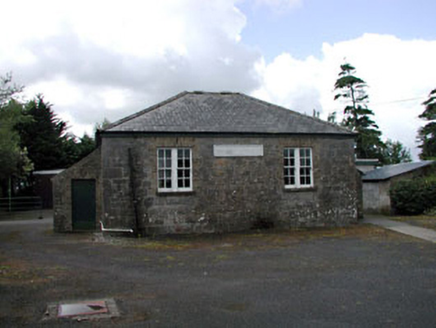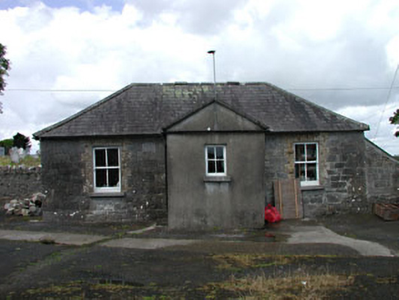Survey Data
Reg No
11903406
Rating
Regional
Categories of Special Interest
Architectural, Scientific, Social
Original Use
School
In Use As
Factory
Date
1840 - 1880
Coordinates
263848, 195709
Date Recorded
26/11/2002
Date Updated
--/--/--
Description
Detached two-bay single-storey national school, built 1857, on a symmetrical plan with pair of single-bay single-storey lean-to recessed porches. Closed, 1993. Disused, 2002. Replacement hipped artificial slate roof; replacement lean-to artificial slate roofs (porches), blackened terracotta ridge tiles, and cast-iron rainwater goods on timber eaves boards on yellow brick header bond eaves with cast-iron downpipes. Part repointed irregularly coursed rubble limestone walls with benchmark-inscribed tooled cut-limestone flush quoins to corners; roughcast surface finish to rear (south) elevation. Square-headed window openings in bipartite arrangement with drag edged dragged cut-limestone sills, timber mullions, and yellow brick block-and-start surrounds framing four-over-four timber sash windows. Square-headed door openings with yellow brick block-and-start surrounds framing timber boarded doors. Set back from road on a corner site with snecked limestone piers to perimeter having rendered yellow brick Running bond capping supporting flat iron double gates.
Appraisal
A national school representing an integral component of the mid nineteenth-century built heritage of County Kildare with the architectural value of the composition suggested by such attributes as the symmetrical plan form housing segregated classrooms for female and male pupils; the construction in a blue-grey limestone with yellow brick dressings producing a subtle two-tone palette; and the small-pane bipartite glazing patterns. Having been well maintained, the form and massing survive intact together with substantial quantities of the historic fabric, thus upholding much of the character of the composition. An adjacent school master's house contributes to the setting of a self-contained ensemble making a pleasing visual statement in a rural street scene.



